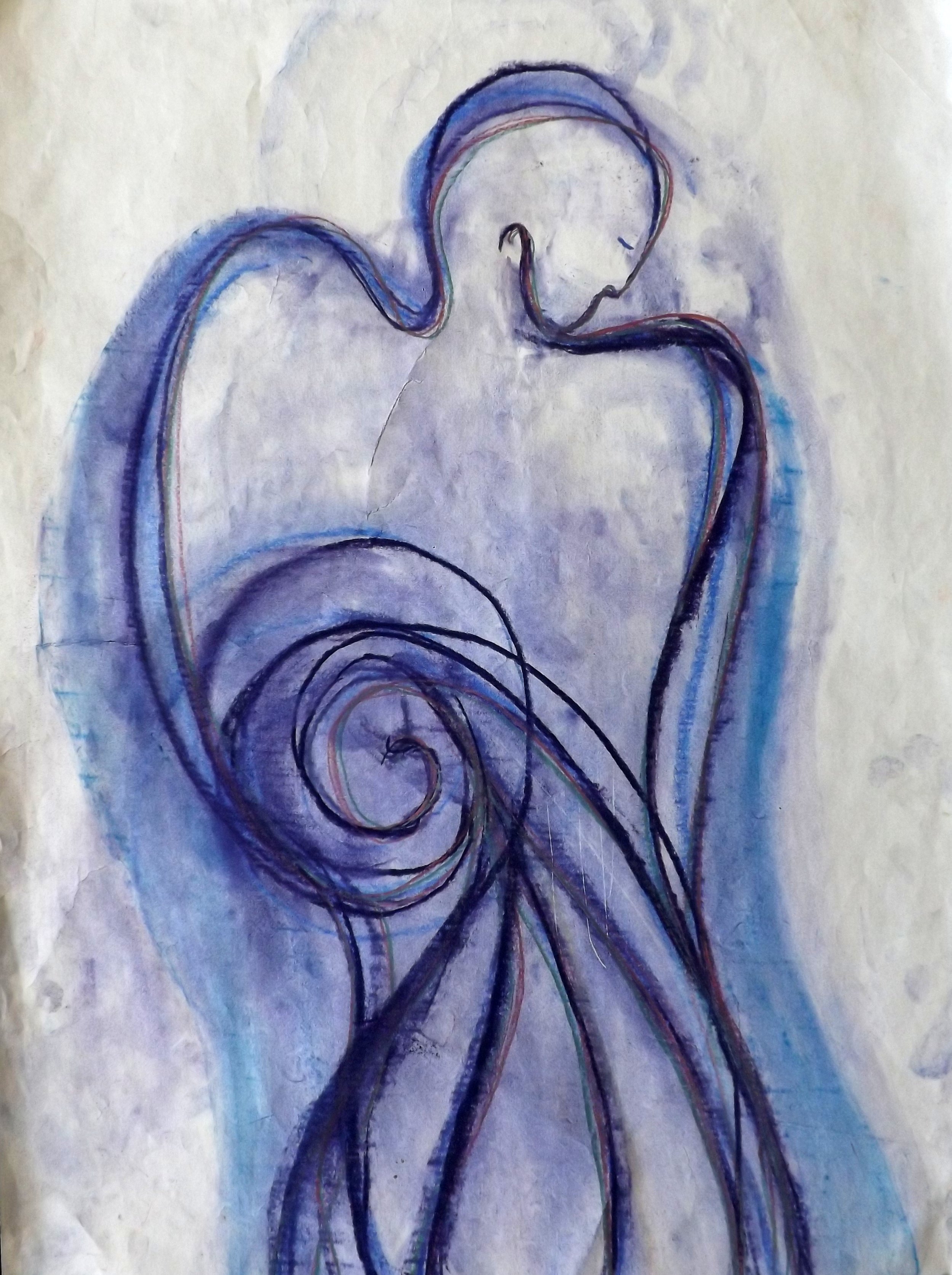A Mythopoetic Mentorship
Developing a Mythopoetic Disposition: Myth-making/Soul-making
“All minds, and all lives, are ultimately embedded in some sort of myth-making. Mythology is not merely a series of old explanations for natural events; it is rather the richness and wisdom of humanity played out in a wondrous symbolic storytelling: no story, no myth, and no humanness either” (“Depth Psychology,” n. d.)
Some considerations:
• Considering supervision as a mentoring process in which the personal/professional transference/counter-transference phenomenon is explored as the imaginal inter-subjective field of depth inquiry.
• Take the opportunity to include intimate inner figures such as the child or the disturber as archetypal phenomenon entering the imaginal field.
• Consider the possibility and richness of being guided by the contents of the counter-transference itself.
• See the image of the inner figures symbolically.
• Participate in the development of the transformative potential of the image of the disturber for example, in one’s practice.
• Develop the discernment of the disturber’s deeper intent, or ulterior motive we might say.
• Be introduced to tools for working with the disquiet of the disturber as it arises in response to the conscious and unconscious guests of the transference phenomenon.
• Learn how in investigating unconscious contents we inevitably transform it and us in the process. To expose a previously unconscious projection, for example, is to transform radically the thing known, a process central to individuation.
• Attend to the unconscious while being affected by it.
• Consider how we frequently experience this complementarity, this tension, between rationally understanding the process and immersing ourselves in it.
• Increase ability to use awareness to notice, value and follow all of the people and parts (images) of a given group (individual psyche) in consensus reality, as well as noticing and valuing the more dreamlike expressions and feelings of a group (individual).
• Develop an understanding of the complete process of a system.
• Awaken an attitude that focuses on the awareness of voices that are both central and marginal in groups, organizations, one's own inner process.
• Consider how the bringing together of the fragmented polarities of one’s culture in such a way that the existential tension of opposites is maintained while the opposites interact mutually, engaging without definitive dominance.
• Consider how polarities may reflectively energize and activate each other, reflecting through distinction” (McNamara, 2010).
A Mythopoetic mentorship may signal to participants the potent unconscious activities of their own inner disturbers that profoundly affect clinical work with clients.
Working with the disturber in the transference/counter-transference phenomenon can take place in supervision or “mentoring” of practitioners to increase the awareness of the deeply rooted issues arising from the archetypal dynamic of the “other” at the core of both the personal as well as the collective disturbances.
Mythopoetic mentoring in supervision:
Stepping into the relationship of supervisor and practitioner as analogous to the therapist client relationship seeing the symbolic and mythopoetic patterns resonating in the imaginal intersubjective field.
In the disquiet of the counter-transference the disturber within is intimating an unconscious call for a change of attitude. Supervision includes this intimate inner figure as an archetypal phenomenon entering the imaginal field and—in an atmosphere of support and mirroring of the professional-self—one is invited to be guided by the contents of the counter transference itself. Symbolically, the disturber is transformational even in its own infant stage of impacting the intersubjective field.
Recognizing Shadow Addiction in Therapeutic Practice
When a client seems to be caught in a repetitive story we must recognize if there is an equivalent or corresponding “addiction” may I call it, within us, in the practitioner’s psyche. We will feel this in the body, which then animates our own inner “disturber”.
In the transference and counter-transference, that imaginal field of intersubjectivity, we may come into contact with collective archetypal forces operating in the unconscious and thereby join the client in finding a way out of the labyrinth of the personal unconscious particularly the “stuck” or addictive narrative. In this intersubjective field, the alliance between the practitioner’s unconscious and that of the client’s has the power to facilitate a movement out of the limitations imposed by the “fixed” stories of the personal shadow, the complexes.
Seeing our own “fixed” versions of ourselves as they parallel our clients’ introduces a relationship of “other” into the imaginal field, which then releases the existing dynamic into alternative possibilities. The awareness of our own self-stories opens the door between “oneself” and “other” which is experienced initially in the relationship between client and therapist (and so, also other inner figures introduced into the field). What is revealed in this opening is the previously cut off, isolated, seemingly idiosyncratic “disturbance” of the addictive narrative. It can then be escorted into a more powerful archetypal setting where the depth of collective human experience is what is being worked with. In this manner, a shift from a pathological framing of the client’s (and therapist;s) process to that of a mythological or mythopoetic one is engaged.
Sitting in the Imaginal Space with other Liminal Presences




